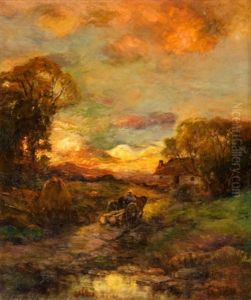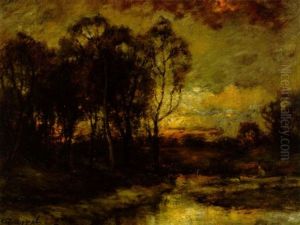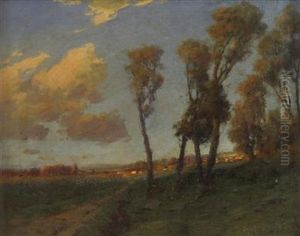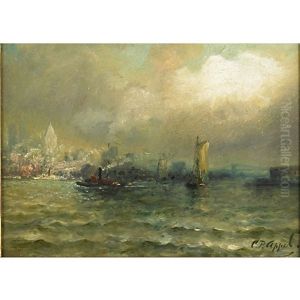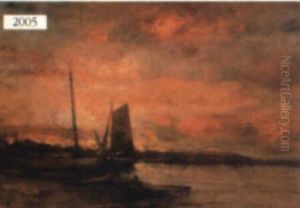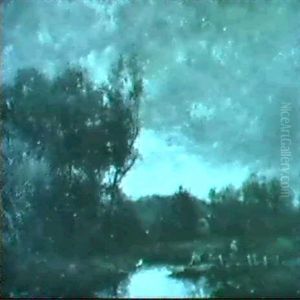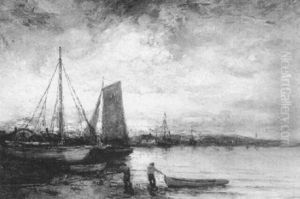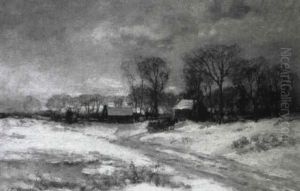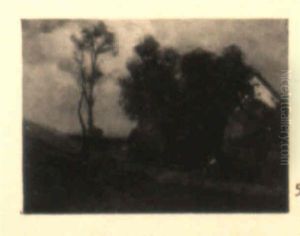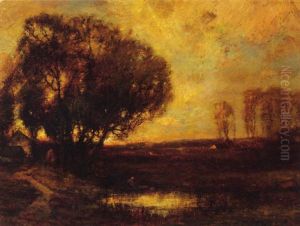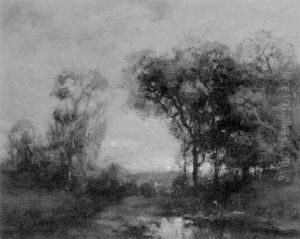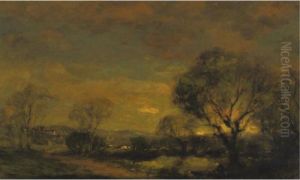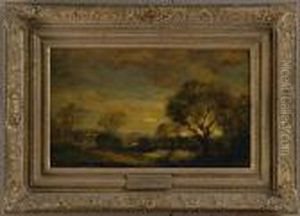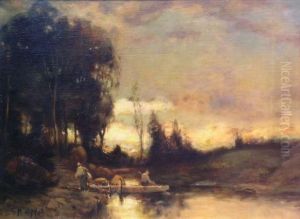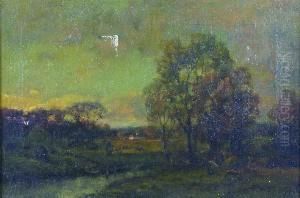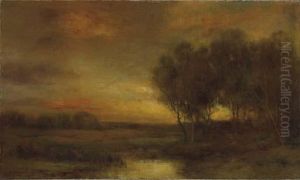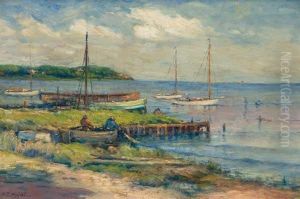Charles P. Appel Paintings
Charles P. Appel was an American landscape painter known for his evocative depictions of the American wilderness and countryside. Born in New York City in 1857, Appel developed an interest in art at a young age. He pursued formal art education at the National Academy of Design in New York and later at the Art Students League, where he honed his skills in painting.
After completing his studies, Appel established himself as a skilled landscape artist. His work was characterized by a keen attention to the effects of light and atmosphere, and he often painted scenes of the New England countryside, the Hudson River Valley, and occasionally scenes from his travels abroad. Appel was part of the tonalist movement, which emphasized a moody and harmonious portrayal of landscapes, often using a restricted color palette. This style was popular in American art during the late 19th and early 20th centuries.
Throughout his career, Appel participated in numerous exhibitions and was a member of prominent art organizations such as the Salmagundi Club. His artwork was well-received by critics and the public alike, and he gained a reputation for his ability to capture the serene and contemplative nature of rural America.
Charles P. Appel continued to paint and exhibit his work until his death on February 1, 1928. Today, his paintings are part of several collections and continue to be admired for their tranquil beauty and technical proficiency. Appel's contribution to American landscape painting is recognized as part of the broader artistic movement that sought to capture the unique spirit and environment of the country during a period of significant change and development.
